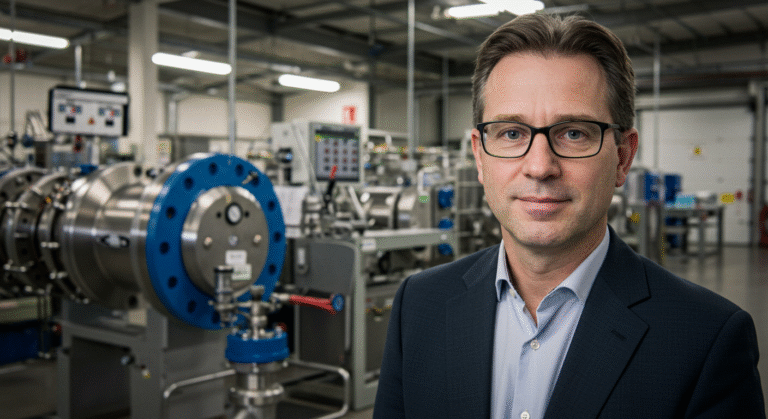10.1016/j.jcp.2024.113494 An Analysis of Ill-Conditioning in PINNs
Introduction to 10.1016/j.jcp.2024.113494
The research study marked by DOI 10.1016/j.jcp.2024.113494 focuses on a pressing challenge in computational science: ill-conditioning in physics-informed neural networks (PINNs). PINNs are unique because they blend machine learning with physical principles, making them suitable for solving partial differential equations (PDEs). However, like many advanced methods, they suffer from optimization issues. This article explores the insights of the paper, explains its importance, and provides a structured overview of the proposed solutions.
Understanding Physics-Informed Neural Networks
PINNs differ from traditional machine learning models because they include physical laws in their training process. Instead of learning only from raw data, they enforce PDE residuals as part of the loss function. This makes them effective in scientific problems but also introduces unique computational difficulties. The paper 10.1016/j.jcp.2024.113494 highlights these challenges clearly.
Why Ill-Conditioning Matters in PINNs
Ill-conditioning refers to instability in optimization. For PINNs, this means training becomes slower, gradients can explode or vanish, and the final solution may not be accurate. The authors of 10.1016/j.jcp.2024.113494 emphasize that this instability is a core reason why PINNs have not scaled well for complex problems.
Causes of Ill-Conditioning in PINNs
There are several causes of ill-conditioning in PINNs, such as:
- Imbalance between data loss and physics-based loss.
- Poor scaling of PDE residuals.
- High condition numbers in optimization matrices.
By analyzing these, the paper 10.1016/j.jcp.2024.113494 provides a deep theoretical explanation.
Mathematical Perspective of Ill-Conditioning
The study examines the Jacobian and Hessian matrices of PINN loss functions. A high condition number in these matrices makes the problem unstable. The paper uses rigorous mathematical proofs to explain why standard optimizers fail in these cases.
Related Work Before 10.1016/j.jcp.2024.113494
Other studies have tried to solve PINN instability by adaptive loss weighting or specialized optimizers. However, these approaches often lacked consistency across different problems. The new study provides a more comprehensive solution.
Proposed Remedies in 10.1016/j.jcp.2024.113494
The solutions include:
- Loss weighting strategies for balancing PDEs and data.
- Normalization techniques for stable scaling.
- Preconditioning methods for improved training.
- Better architectures tailored to physics problems.
Role of Loss Weighting in Stability
One of the strongest points of the paper is the use of loss weighting. By dynamically adjusting the importance of different terms, PINNs can maintain better conditioning and train more effectively.
Impact of Normalization
Normalization ensures that all features and outputs remain in similar numerical ranges. According to 10.1016/j.jcp.2024.113494, this significantly improves convergence and reduces training time.
Preconditioning as a Core Technique
Preconditioning modifies the optimization problem to make it easier to solve. The study explains how this method reduces ill-conditioning and improves gradient behavior.
Network Architectures for PINNs
The research also highlights how architectural design can affect ill-conditioning. Proper depth, activation functions, and residual connections can reduce instability.
Experimental Validation
The experiments performed in 10.1016/j.jcp.2024.113494 include the simulation of three-dimensional flow around an M6 wing. These experiments proved the effectiveness of the proposed remedies.
Comparison with Traditional PINNs
Compared to traditional approaches, the methods in 10.1016/j.jcp.2024.113494 showed faster convergence, reduced error rates, and better training stability.
Practical Benefits of the Proposed Methods
Researchers applying these methods will notice improvements such as:
- Faster model training.
- Reduced computational cost.
- Higher accuracy in complex PDE problems.
Applications Beyond Fluid Dynamics
While the paper tested on an aerodynamic problem, the methods are useful for:
- Climate modeling.
- Material science.
- Quantum mechanics.
- Structural simulations.
Importance for Computational Science
The findings in 10.1016/j.jcp.2024.113494 are crucial because they help bridge the gap between theoretical AI and practical engineering applications.
Limitations Discussed in the Study
No study is without limitations. The authors admit that while their methods improve stability, more work is needed for scalability in extremely large systems.
Future Research Opportunities
The paper points to future directions, such as adaptive weighting systems, new optimization algorithms, and domain-specific architectures for PINNs.
Theoretical Contributions of 10.1016/j.jcp.2024.113494
Beyond practical remedies, the paper makes a strong theoretical contribution by analyzing ill-conditioning rigorously through condition numbers and gradient analysis.
Broader Impact on Machine Learning
These results not only apply to PINNs but also provide insights into other AI models that embed external constraints or rules into training.
Community Reception
Since its release, 10.1016/j.jcp.2024.113494 has attracted attention in the scientific community as a breakthrough in making PINNs more reliable.
Conclusion
The paper associated with DOI 10.1016/j.jcp.2024.113494 offers both a deep analysis and actionable solutions for one of the biggest challenges in PINNs. By addressing ill-conditioning, the study paves the way for more efficient, scalable, and accurate applications of PINNs in scientific computing.
FAQs
Q1: What is the main topic of 10.1016/j.jcp.2024.113494?
It analyzes and solves ill-conditioning in physics-informed neural networks.
Q2: Why do PINNs face ill-conditioning?
Because of imbalanced loss functions, poor scaling, and unstable optimization landscapes.
Q3: What solutions are proposed in the paper?
Loss weighting, normalization, preconditioning, and architectural improvements.
Q4: Which experiment validates the findings?
The simulation of three-dimensional flow around an M6 wing.
Q5: How can this research help future applications?
It enables stable and efficient PINNs for fields like climate science, quantum mechanics, and engineering.
Q6: How does 10.1016/j.jcp.2024.113494 improve training efficiency in PINNs?
By balancing loss terms and applying normalization, the paper reduces training instability, which makes optimization faster and more efficient.
Q7: Can the methods in 10.1016/j.jcp.2024.113494 be applied to real-world engineering problems?
Yes, the techniques are designed for practical scientific problems like fluid dynamics, aerodynamics, and structural simulations.
Q8: What role does preconditioning play in solving ill-conditioning?
Preconditioning reshapes the optimization problem, ensuring gradients remain stable and models converge more quickly.
Q9: Does 10.1016/j.jcp.2024.113494 provide experimental proof of its methods?
Yes, the paper validates its solutions using the example of three-dimensional flow around an M6 wing, showing measurable improvements.
Q10: Are the proposed techniques limited only to physics-informed neural networks?
While designed for PINNs, some ideas like normalization and preconditioning can be applied to other constrained deep learning models.
Q11: How does the study handle imbalance between data and physics losses?
It suggests adaptive weighting strategies that dynamically adjust the importance of each term to achieve balance.
Q12: Why is normalization critical according to 10.1016/j.jcp.2024.113494?
Normalization ensures that variables remain within comparable ranges, preventing extreme values from destabilizing training.
Q13: Can these methods reduce computational costs in large-scale simulations?
Yes, by improving convergence speed, the methods significantly reduce the computational resources needed for large-scale problems.
Q14: What are the theoretical contributions of the paper?
It provides a detailed mathematical analysis of why ill-conditioning occurs in PINNs, focusing on Jacobian, Hessian, and condition numbers.
Q15: How will this research influence future developments in PINNs?
It lays the foundation for more advanced architectures, adaptive training methods, and domain-specific PINN applications across multiple industries.






